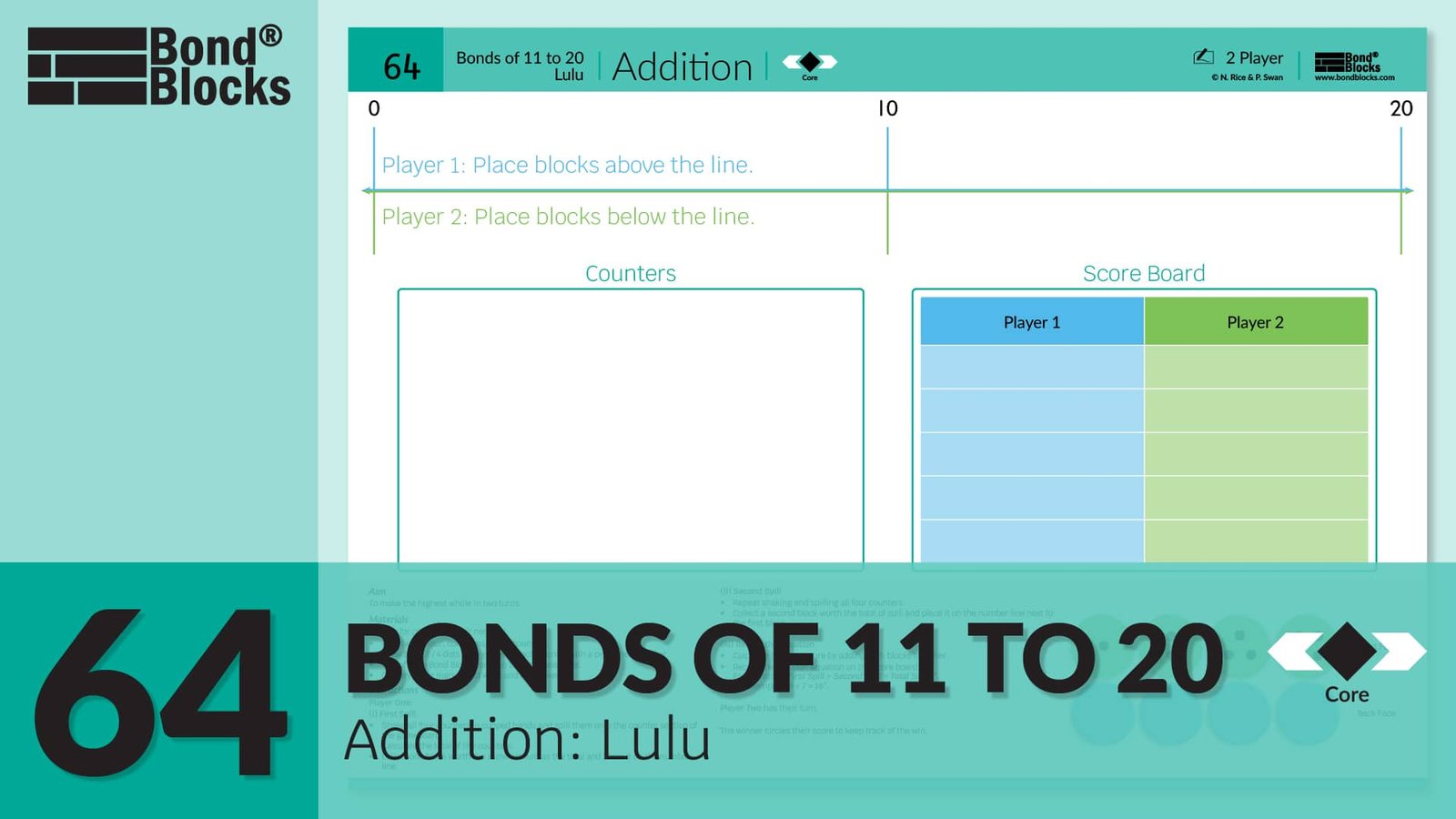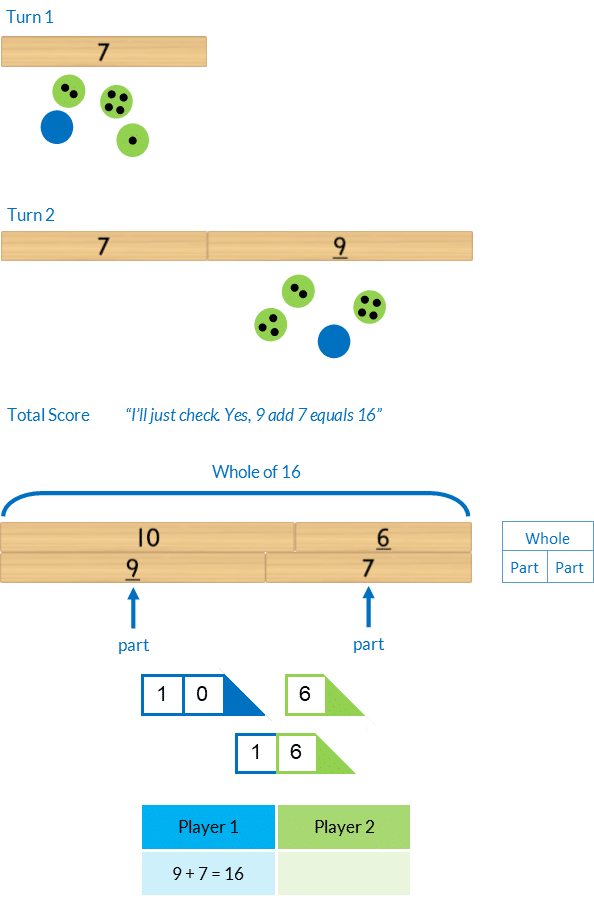64) Addition
Bonds of 11 to 20: Lulu

Mathematics
Apply concept of addition using:
- the commutative property of addition. Students rearrange two parts, represented with Bond Blocks, to make addition easier.
- the associative property of addition. Students rearrange three parts, represented with dots on counters, to make addition easier.
Develop fluency adding two numbers, where each number is ten or less.

Prior knowledge of ten plus bonds and part-part-whole is required.
Language
- add
- equals
- part-part-whole
- rearrange parts

Differentiation
A little easier
Working Memory Support: build a bond
Use Bond Blocks to represent the whole, as well as the parts.

Place value arrow cards can be when recording the whole to support students with processing or writing difficulties. Click to download Place Value Arrow Cards.
A little harder
Calculate: difference comparing scores
Students calculate how much they won by, the difference between each player’s score.

Calculate: difference to 20
Students calculate how many more they needed to score 20. This difference to 20 is their score. The player with the lowest score wins the round. The player with the lowest cumulative score after 5 rounds is the overall winner.

Calcuate: sum to 30
Students keep a cumulative total of their scores after each round. The first player to reach 30 wins.
Increase The Whole
Play as per the core activity but with five counters instead of four. Draw five dots on the fifth counter.

This gives a maximum of 30 after two turns of spilling the counters. Bond Blocks may extend off the board to the right of the 20 marker.

Progression
In the next activity, students use addition to solve subtraction by adding on. Go to
Activity 65
Bonds of 11 to 20: Subtraction, Difference
